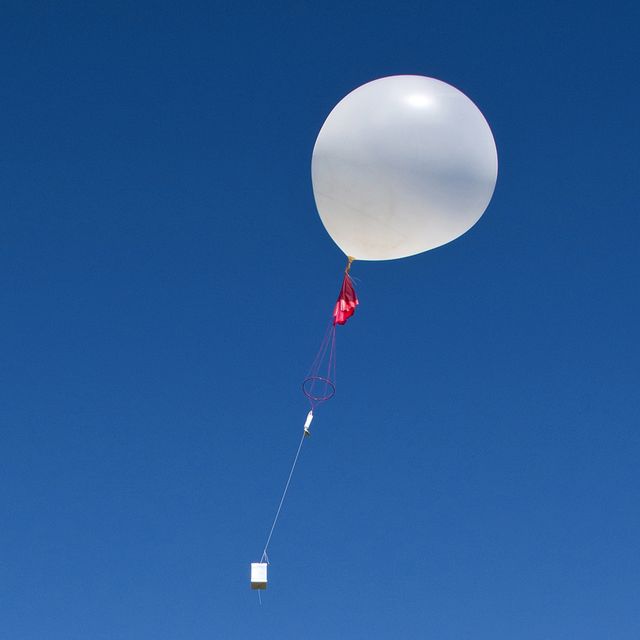- The U.S. Air Force may have shot down an inexpensive pico balloon from ham radio enthusiasts last week, thinking it was something bigger.
- Pico balloons are usually used to measure weather variables.
- Thousands of pico balloons are launched every day, which could create further headaches for the Air Force.
Unfortunately for those who want to believe, it’s looking less and less likely that the U.S. Air Force hit an alien spacecraft when it recently downed a mysterious flying object. Instead, the truth is probably a bit more awkward.
Some observers speculate that the destroyed UFO during the February 11 intercept over Yukon was actually a weather balloon. The news comes as President Joe Biden appeared to tamp down speculation that the flying object was related to a Chinese spy balloon, like one of the other several flying objects the U.S. military recently shot down. (It’s okay if you’re having a hard time remembering which is which.)
Aviation enthusiast Iaaan Kluft noted on Twitter that a pico balloon known as K9YO-15 would have been at the same place where the U.S. Air Force shot down the object recently. The balloon was launched from Illinois on October 10, 2022, and circled the globe seven times.
There are a lot of balloons up in the air, and it doesn’t seem like anyone’s keeping close track of them. Sending up balloons is popular among some ham radio enthusiasts, but larger balloons require FAA clearance. Smaller balloons, known as “pico” balloons, have a payload of 4 pounds.
A blog post shows that the K9YO-15 balloon was a silver mylar 32-inch sphere. The balloon was carrying a GPS module, some basic computer and communications gear, and was powered by a solar panel.
Pico balloons are usually used to measure weather variables, including temperature, humidity, pressure, or wind currents. Once the information is gathered, the data is transmitted through a global radio network. Because a pico balloon runs on solar power, it has a very long lifespan. Pico balloons are similar to those sold for children’s parties and are filled with helium.
The shootdown of the flying object on February 11 was expensive, with each AIM-9X Sidewinder missile costing around $400,000. Assembling a pico balloon, meanwhile, is relatively cheap. The balloon usually costs less than $30, while the data transmission is the most expensive part of the payload. One popular GPS Messaging System used for weather balloon flights is the Spot 3 Satellite Messenger, which sells for around $300.
If the object that was shot down turns out to be a pico balloon, then the North American Aerospace Defense Command (NORAD) have its hands full, keeping track of them all. By one estimate, 2,000 single-use pico balloons are launched daily.

Sascha Brodsky, a freelance journalist based in New York City and a graduate of the Columbia University Graduate School of Journalism and Columbia's School of International and Public Affairs, writes about many aspects of technology including personal technology, AI, and virtual reality. His work has appeared in The New York Times, The Atlantic, The Guardian, and many other publications. In his spare time, he enjoys cycling and hiking.













